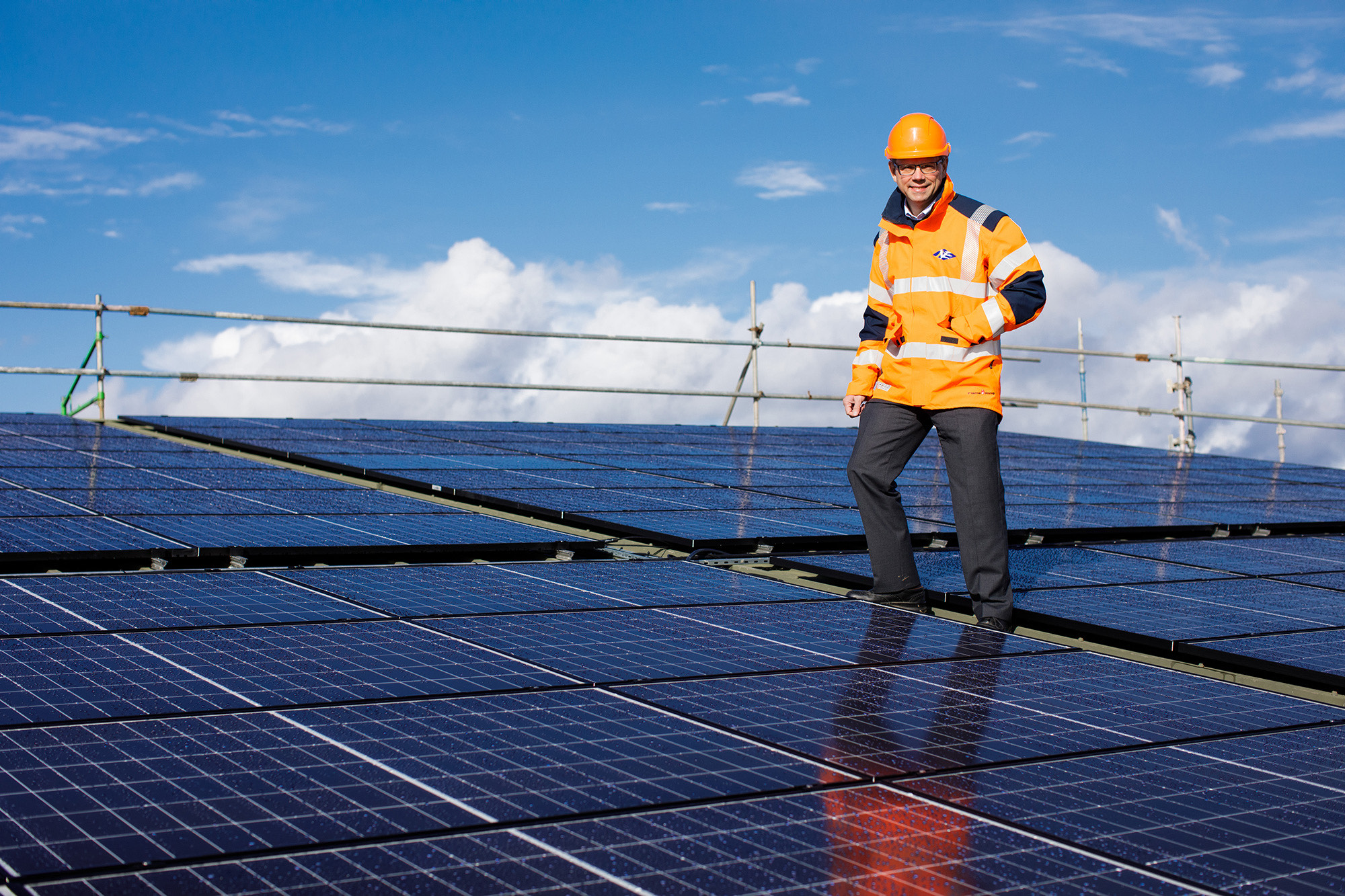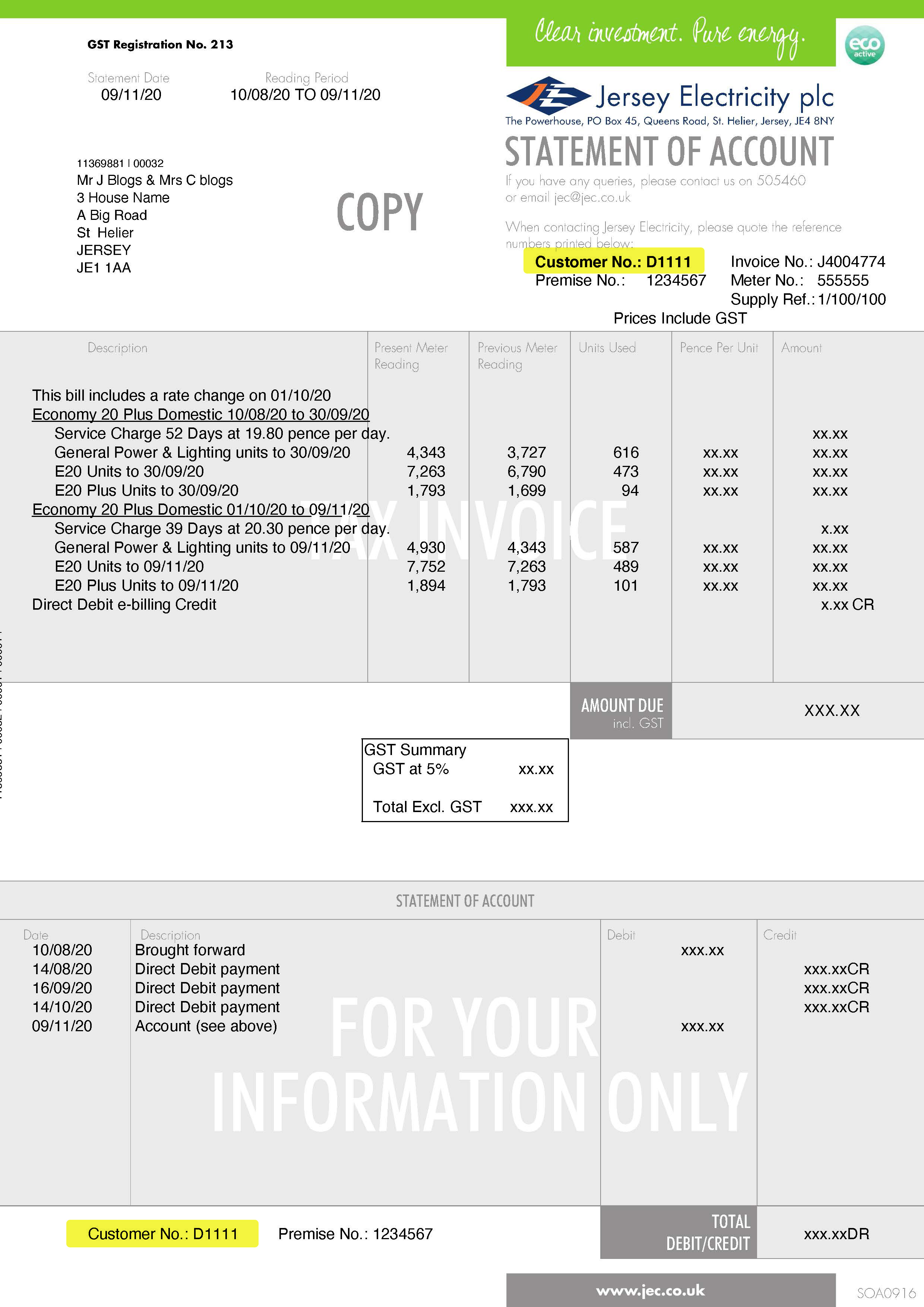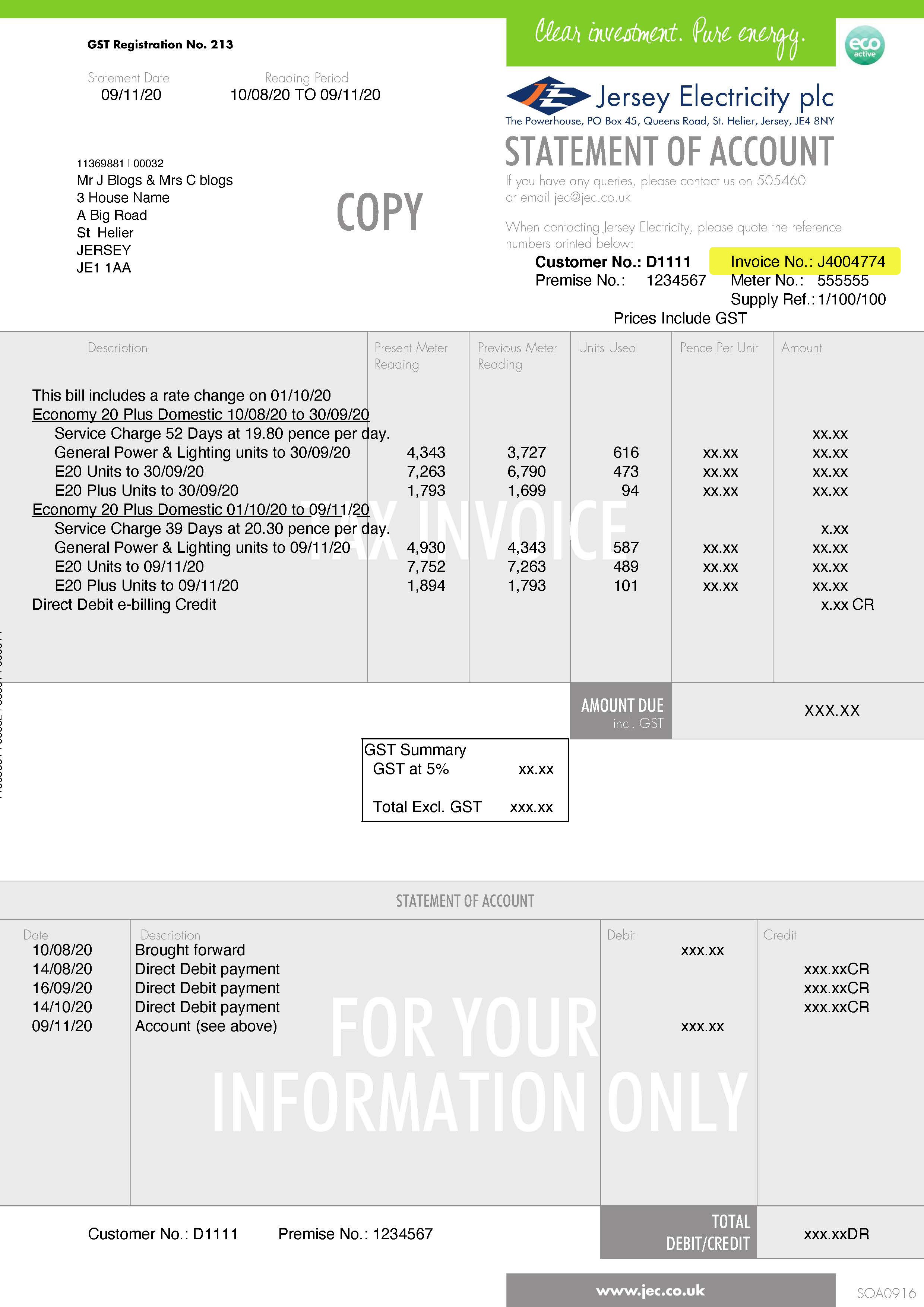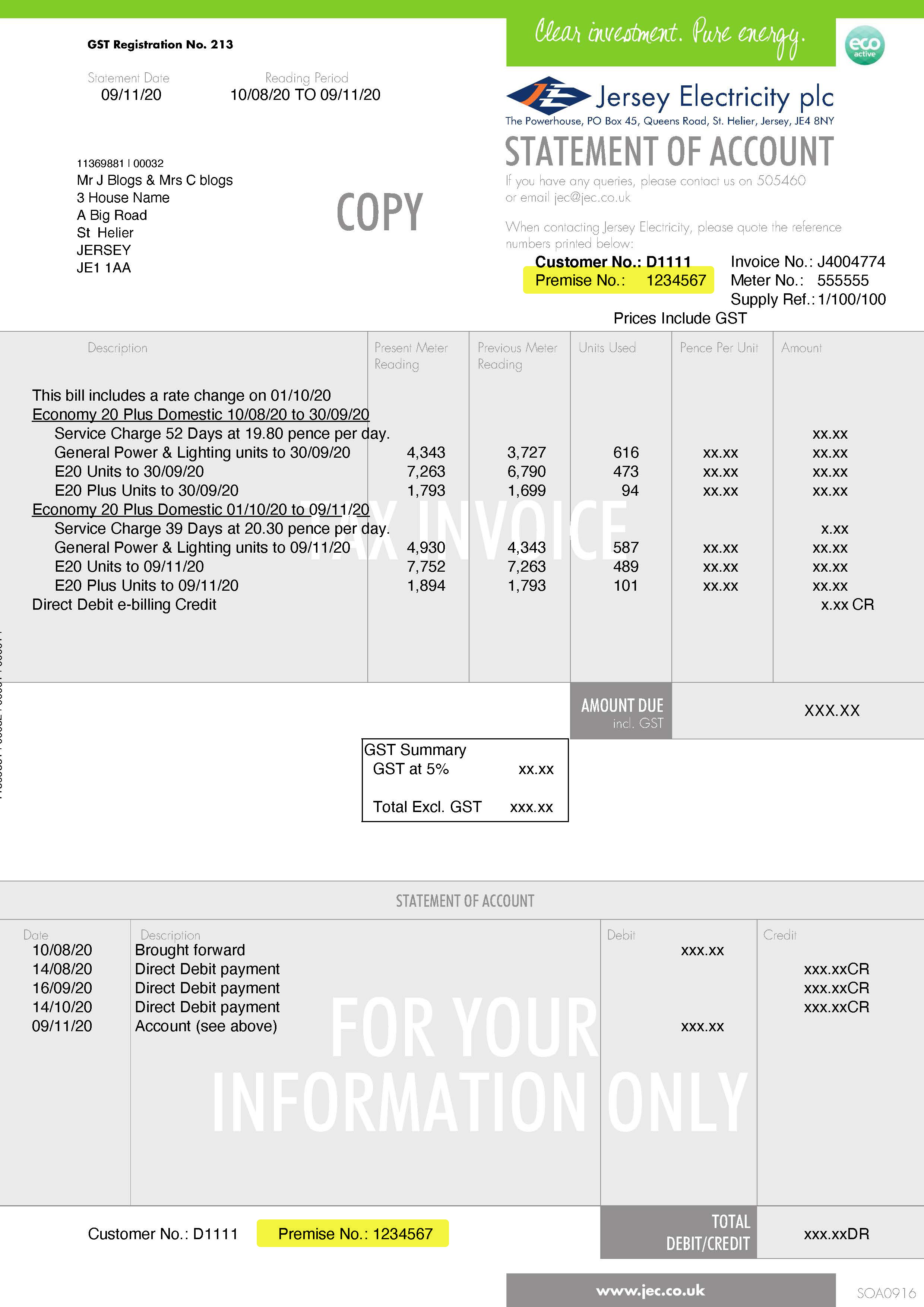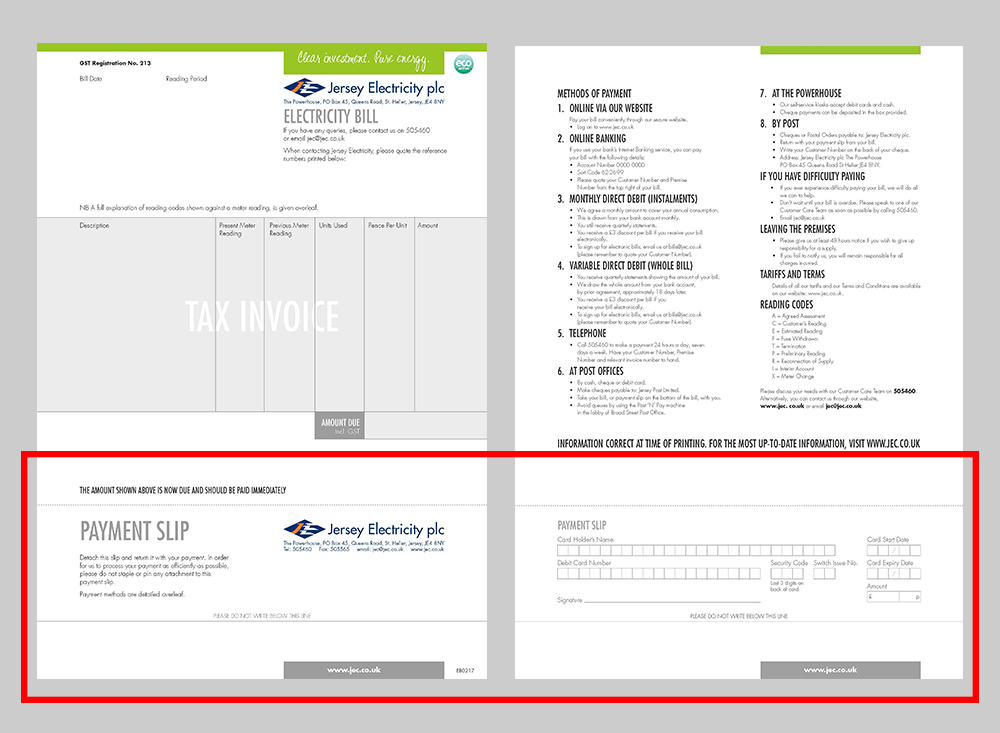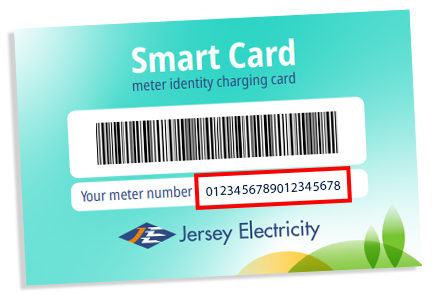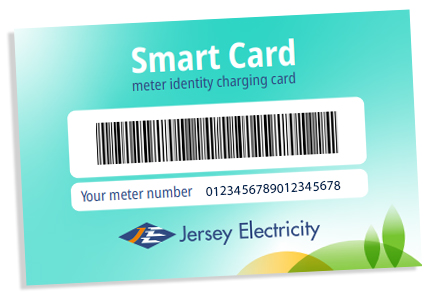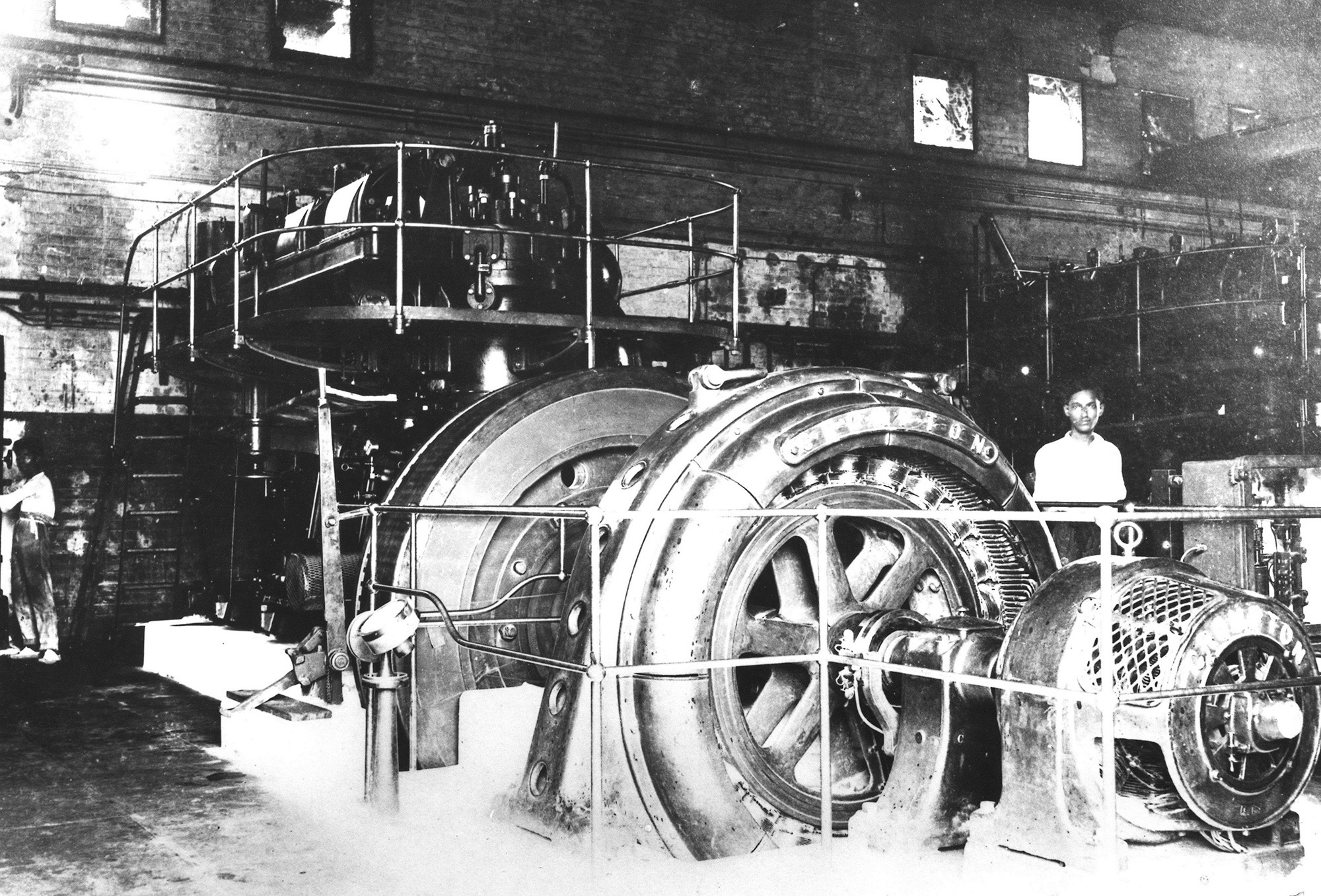
1920s - Establishing an island's supply
Some private plant supplied electricity as early as 1883. Public supply only became possible (in St Helier at least) with the establishment of the Jersey Electricity Company in April 1924.
The generating station at Albert Pier opened in July 1925 and included a small retail showroom displaying lights, fans a carpet sweeper and a washing machine.

1930s - Moving to a new power station
Unit sales exceeded one million, and with continued growth predicted, the Company acquired a site for a new power station at Queen's Road in November 1931.
The mains network was extended west for the construction of the airport in 1934. The States acquired a controlling interest in the Company in 1936 and mains extended to every parish.

1940s - The occupation stalls expansion
The German occupation in July 1940 cut expansion. The Essential Services Committee took control of the Company and electricity was eventually rationed to four units a week as fuel oil supplies ceased.
Occupying Forces requisitioned Queen's Road in January 1945 to supply premises of their choice. Staff moved back into the Power Station at 11am on VE Day to restore supplies, enabling some in town to hear Churchill's speech on the wireless. The long haul back to normality had begun.
1950s - Electric cookers fuel our growth
The Company sought to increase unit sales with electrical equipment sales, especially electric cookers. It even converted a former mobile greengrocery van into a travelling electrical showroom.
From 1952 to 1955 unit sales increased 32% from 24 million to 32 million and customers began to benefit from cheaper tariffs for water and off-peak storage heating.
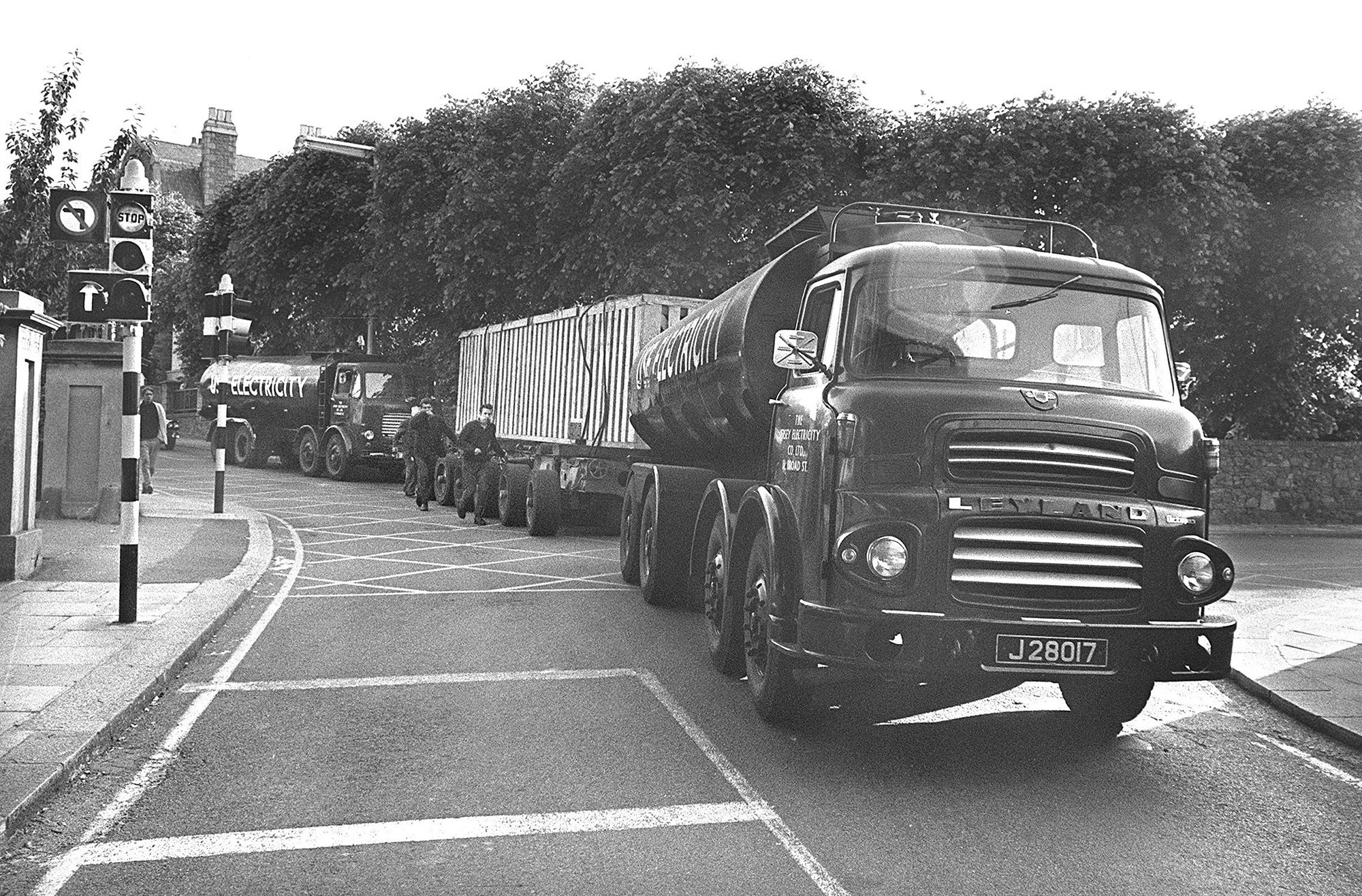
1960s - La Collette and stock market listing
By 1962, unit sales topped 100million, and maximum demand doubled from 15.5MW to 33.8MW in six years. Two 5MW Mirrlees diesel sets brought Queen's Road capacity to 40MW.
A bigger solution was needed long term, and the Company decided to build La Collette Power Station in 1963. The Company was first listed on the London Stock Exchange in February 1964 to raise capital. By November 1966 the first stage of La Collette was completed, and two steam boilers were producing 60MW.
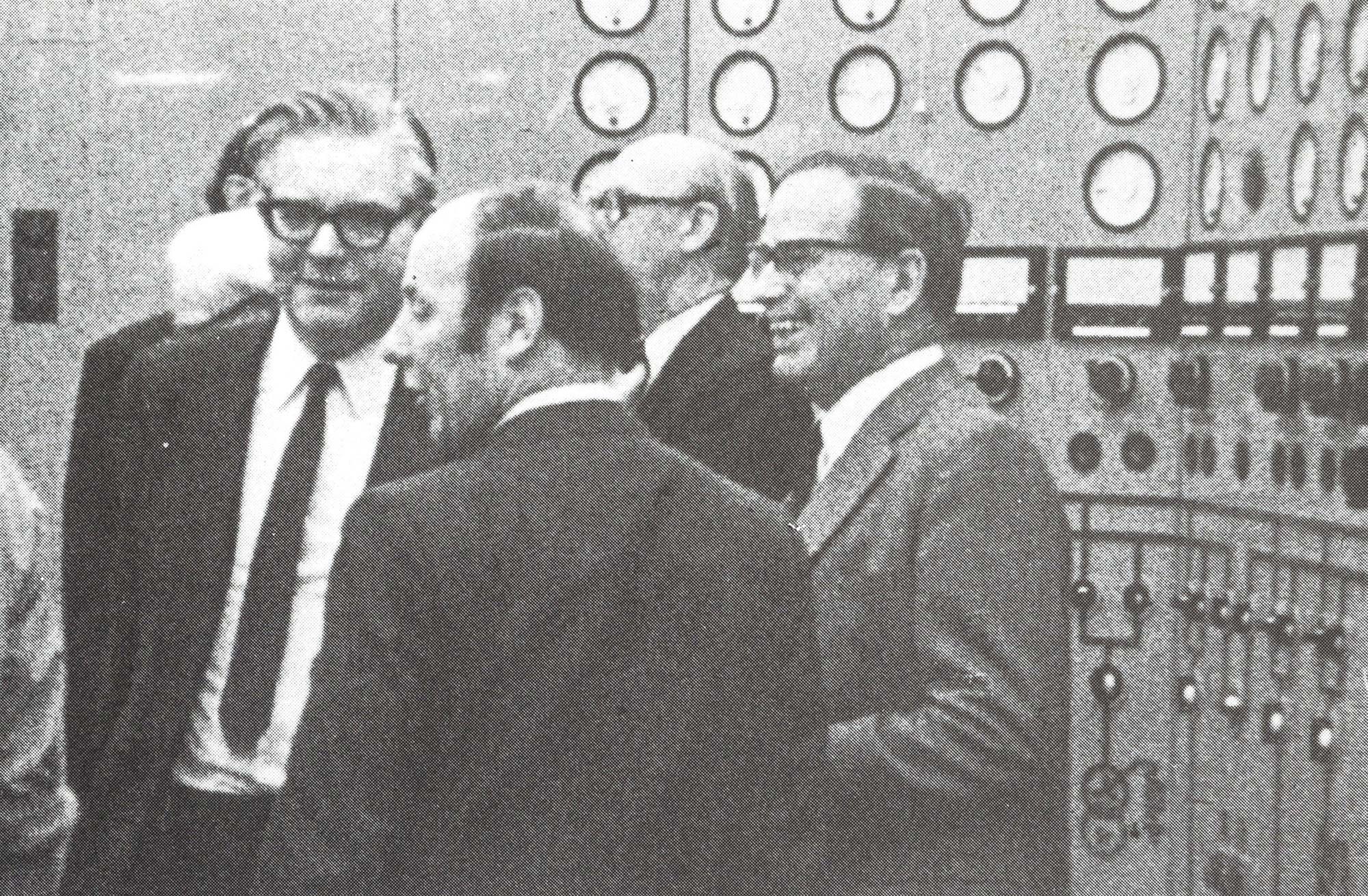
1970s - Growth, growth, growth
Operational employees moved out of Queen's Road and the 5MW Mirrlees diesel sets transferred to La Collette, bringing capacity there to 80MW. With demand still rising, we expanded La Collette to accommodate another 30MW turbine.
The Power Station formally opened in November 1973 but by 1975 oil costs increased from £800,000 to £3m a year. Another 64% rise in 1979 meant the price of oil to generate was more than electricity sales. The Board first considered the idea of a link to France's nuclear power to end reliance on oil.

1980s - A director's vision comes to fruition
The death in February 1980 of Senator Cyril Le Marquand, a Director for 27 years and Chairman for 22 years, marked the end of an era for the Company he had steered through a period of tremendous growth.
EDF1, the first interconnector between Surville in France and Archirondel, was commissioned in May 1985, enabling the importation of low carbon electricity from the French distribution system. The Company launched the Economy 7 Tariff as a direct consequence.
The Great Storm of 1987 cut supplies to outlying areas which took days to restore. Two gas turbines were commissioned at Queen's Road to provide 75MW of fast start standby generation.
1990s - A link between islands
In 1994 a 45MW extension opened at La Collette, and the following year the Company decided to lay a second undersea cable to France, Normandie 2, in co-operation with Guernsey Electricity. The Comfort Heat tariff launched in 1996.
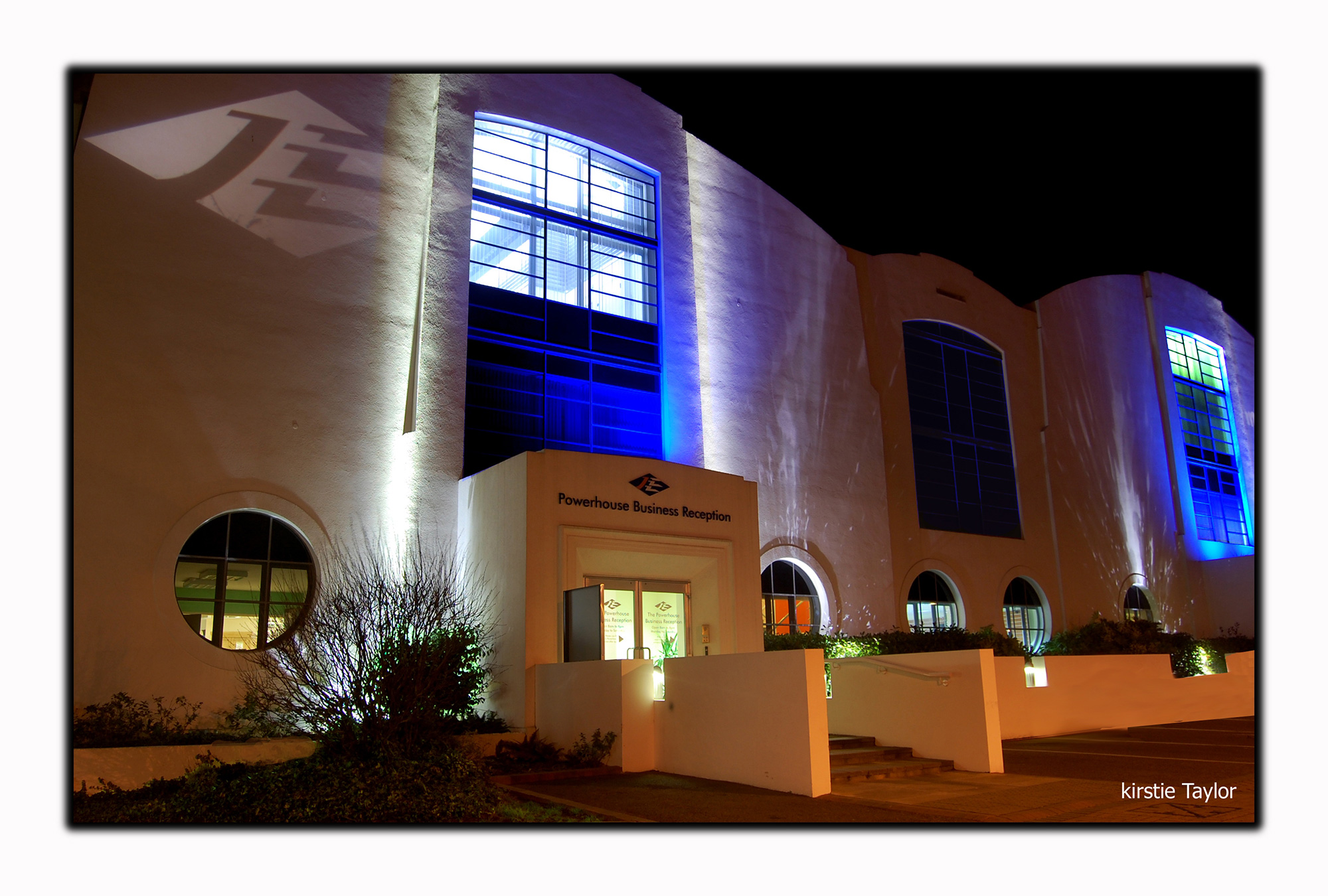
2000s - A decade for doing
The 90MW Normandie 2 was commissioned in 2000 along with a 60MW inter-connector to Guernsey, creating the Channel Islands Electricity Grid (CIEG). That year Queen's Road Power Station was refurbished into office and retail space.
A ten-year project to install a dual 90,000-Volt (90kV) transmission ring around the Island began. This included Rue des Prés 90kV Primary substation in 2003 and Western Primary substation in 2008. The Board committed to laying a third undersea cable to France, Normandie 3, in 2004, over a different route to the two earlier cables. In 2008, Mike Liston stepped down as Chief Executive after 15 years to be succeeded by Chris Ambler.
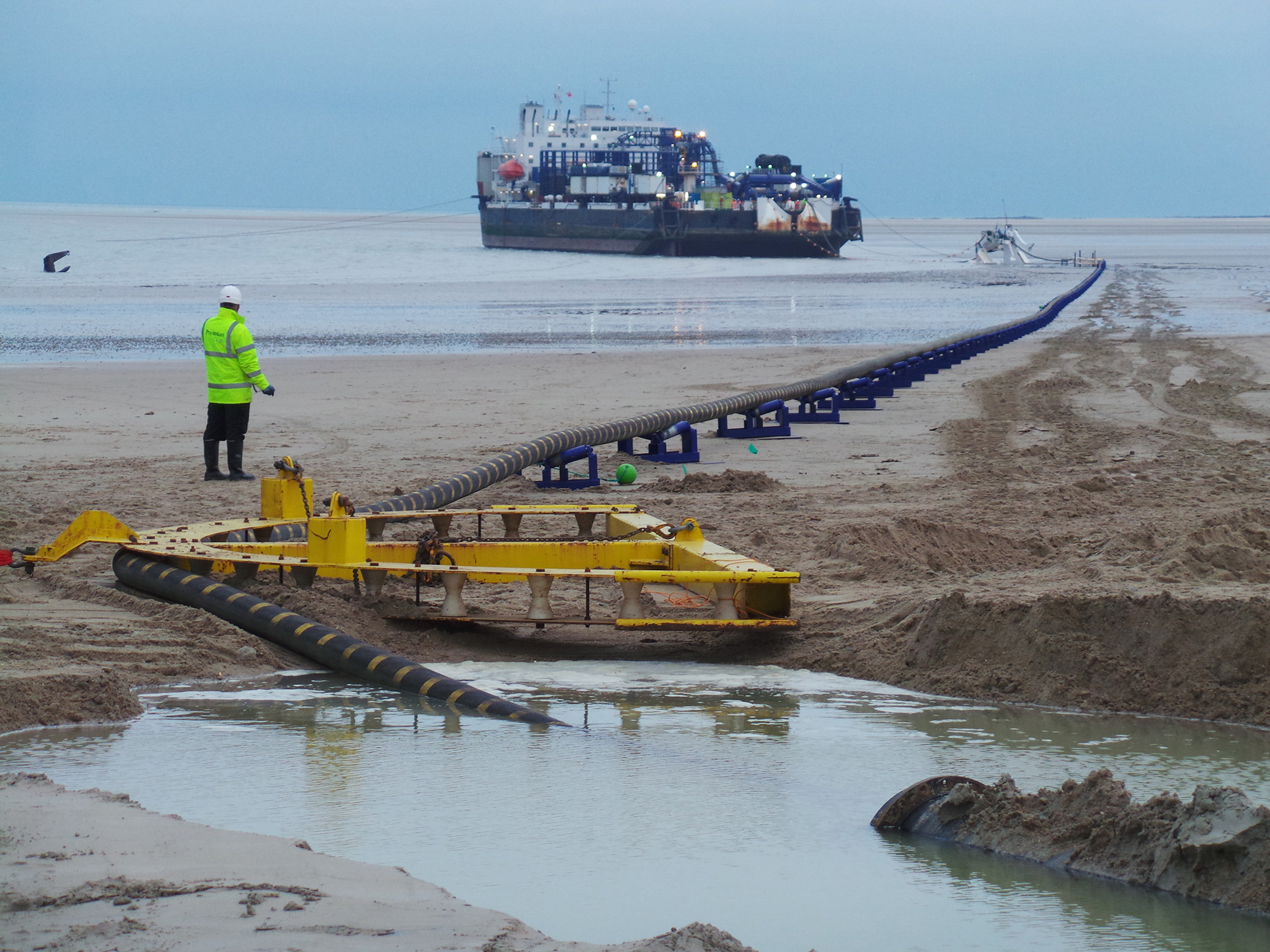
2010s - Laying the platform for a renewable future
Jersey Electricity Company became Jersey Electricity plc in March 2010. 2011 marked a significant milestone with the completion of the dual 90kV transmission ring around Jersey in readiness for the commissioning of South Hill Switching Station.
The Government's Energy from Waste Plant integrated into La Collette services, and two 5MW Mirrlees diesel engines were dismantled in readiness for the installation of two 11MW Sulzer diesel generators from Saudi Arabia.
Turnover exceeded £100million for the first time in 2011. South Hill Switching Station officially opened in April 2012, and two months later the first undersea supply cable was decommissioned after 28 years' service. La Collette was re-mobilised to supplement limited import capacity, but at the end of the year, the French granted final permissions for Normandie 3. The cable was laid throughout May and June 2014 and began delivering power to the network on 24 September.
In May 2014 we were granted Planning Permission to build St Helier West primary substation. After extensive Civils Works, construction started in September 2017, and it came into service in December 2018
In April 2016 we recovered ED1 from the seabed in preparation for the installation of its replacement, the 100MW Normandie 1 (N1), over the same route. We completed this £30m project in just six days in August 2016. N1 began importing power on 1 December 2016 and, along with N2 and N3, provides the Channel Islands with access to 245MW of low carbon electricity.
The Government of Jersey declared a climate emergency in May 2019 set a target of making Jersey carbon neutral by 2030. We launched a new vision 'to enable life's essential and inspire a zero-carbon future.
2020s - A commitment to tackling COVID
We accelerated the final phase of our Smart Meter roll-out in response to the COVID-19 pandemic and completed the Island-wide project in August 2020.
We played a big part in the construction of the Nightingale Wing by providing power supplies to the COVID-19 emergency field hospital. We rapidly expanded Jersey public EV charging infrastructure during 2020 to help further the Island's carbon neutrality ambitions.

